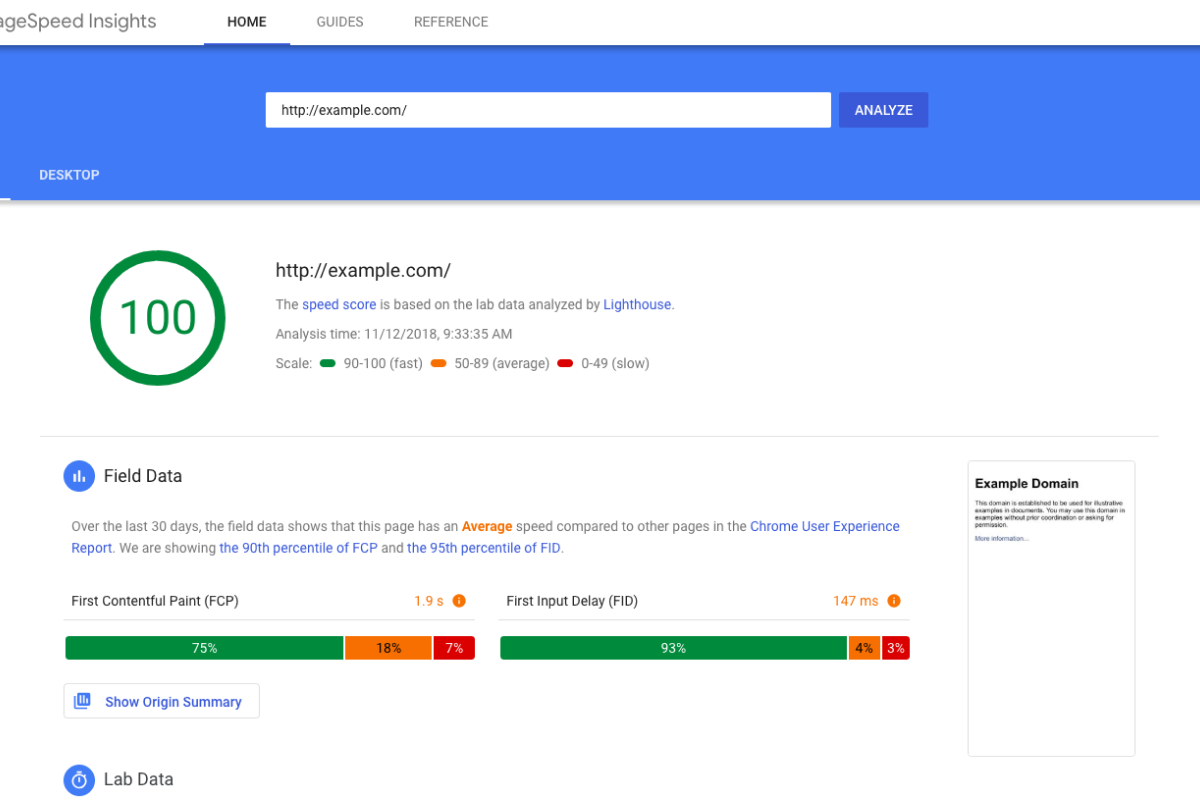RIA Website SEO Audit: Why Template Sites Fail and Custom Sites Win in 2025
Many RIAs invest in templated platforms expecting polished, professional results. But after launch, reality sets in: the site isn’t ranking, traffic is stagnant, and meetings aren’t increasing. Despite a glossy appearance, these cookie-cutter sites consistently underperform in search engines, AI-powered discovery tools, and conversion metrics.
This comprehensive SEO audit guide reveals exactly why templated financial advisor websites fail—and what successful growth-focused RIAs do differently to dominate organic search and generate qualified meeting requests.
If you’re evaluating platforms, explore our detailed breakdown of FMG vs Snappy Kraken vs Mileage to understand how platform choices directly impact SEO outcomes.
1. The Template Trap: Why Cookie-Cutter RIA Sites Don’t Rank
The promise is compelling: launch a professional financial advisor website in days, not months. Choose your template, add your logo, customize a few colors, and go live. Thousands of RIAs have followed this path.
But here’s what the platforms don’t advertise: templated websites are fundamentally designed for speed and scale—not search visibility or conversion optimization.
The Hidden Cost of Template Convenience
When you launch a template site, you’re inheriting structural decisions made for mass deployment, not organic growth. Every advisor using that template shares the same:
- URL structure and site architecture
- Page hierarchy and navigation patterns
- Content frameworks and placeholder copy
- Technical infrastructure and server environments
Search engines prioritize differentiation and authority. Template sites offer neither.
The advisors who achieve sustained organic growth—month-over-month traffic increases, page-one rankings for competitive keywords, consistent meeting requests—have made a different choice. They’ve invested in websites engineered for performance from the foundation up.
2. Seven Critical SEO Failures in Templated Financial Advisor Websites
Through hundreds of professional SEO audits for financial advisors, we’ve identified seven recurring problems that prevent template sites from ranking:
Non-Unique Content That Search Engines Ignore
When identical service descriptions appear across hundreds of advisor websites, search engines have no reason to rank yours. Pre-written template content provides zero competitive advantage. Google’s algorithms actively penalize duplicate content, making it nearly impossible to rank for valuable keywords when your pages mirror competitors.
Thin Pages That Signal Low Authority
Many template service pages contain 200-300 words—barely enough to establish topical relevance. Search engines favor comprehensive content that demonstrates expertise. Pages under 500 words rarely rank for competitive financial services keywords.
Missing or Duplicate Metadata
We regularly audit template sites where every page shares identical meta titles or where critical pages have no meta description at all. This fundamental oversight tells search engines you haven’t optimized for discovery. Proper metadata optimization alone can increase click-through rates by 20-30%.
Slow Site Speeds That Kill Rankings
Bloated themes, unoptimized images, and shared server environments create load times exceeding 4-5 seconds. Google’s Core Web Vitals directly impact rankings, and slow sites are penalized. Every second of load time increases bounce rate by approximately 32%.
Poor Mobile Responsiveness
With 60%+ of financial services searches happening on mobile devices, sites that don’t adapt properly to different screen sizes lose both rankings and conversions. Google’s mobile-first indexing means your mobile experience is now your primary ranking factor.
Inadequate Schema Markup
Structured data helps search engines understand your services, location, and expertise. Without proper schema implementation, you miss opportunities for rich snippets, local pack rankings, and enhanced search visibility. Template platforms rarely implement comprehensive schema beyond basic Organization markup.
Broken Internal Linking Architecture
Template sites often bury important service pages under generic navigation. Poor internal linking dilutes page authority and confuses search engines about which pages matter most. Strategic internal linking is one of the most underutilized SEO opportunities for advisor websites.

3. Inside a Professional SEO Audit: What We Examine
At Mileage, our comprehensive RIA website SEO audits go far beyond surface-level checks. We conduct deep analysis across six critical dimensions:
Content Quality and Uniqueness Analysis
We evaluate every page for originality, keyword optimization, search intent alignment, and conversion focus. Is your content answering the questions prospects are actually searching for? Does it demonstrate expertise while remaining compliant? We identify content gaps and opportunities for strategic expansion.
Technical SEO Foundation Review
Our technical audit examines site speed (both desktop and mobile), Core Web Vitals performance, crawlability and indexation status, XML sitemap structure, robots.txt configuration, HTTPS implementation, and redirect chains. We identify every technical barrier preventing search engines from properly accessing and ranking your content.
Learn more about our technical SEO services for financial advisors.
Site Architecture and Navigation Assessment
We map your entire site structure to evaluate logical organization, internal linking patterns, page hierarchy and depth, navigation usability, and content siloing. Are your most important pages receiving proper internal link equity? Can both users and search engines easily discover all your valuable content?
Metadata and On-Page Optimization Audit
Every page receives scrutiny for title tag optimization, meta description effectiveness, header tag hierarchy (H1-H6 structure), image alt text implementation, and keyword placement and density. We identify duplicate or missing metadata that’s costing you visibility.
Backlink Profile and Authority Analysis
We examine your domain authority trajectory, referring domain quality and relevance, toxic backlink presence, anchor text distribution, and competitive backlink gaps. Understanding your link profile reveals both risks and opportunities for authority building.
Schema Markup and Accessibility Check
We verify proper implementation of Organization schema, LocalBusiness schema, Service schema, FAQPage schema, and breadcrumb navigation markup. We also conduct WCAG accessibility compliance checks to ensure your site serves all visitors effectively.
Discover how we apply these principles in our work with financial services firms nationwide.
4. Real Issues We Uncover in RIA Website Audits
Through professional SEO audits for financial advisors nationwide, we’ve identified recurring patterns that prevent template sites from achieving organic growth. Here are three common scenarios we encounter:
Scenario A: The Duplicate Content Problem
What We Often Find: Mid-sized RIAs using popular template platforms where the homepage lacks a proper H1 tag, every service page has duplicate meta descriptions, and service content matches 40+ other advisor sites word-for-word.
Critical Issues Typically Present:
- Zero unique content across core service pages
- Site speed scores below 50 on mobile devices
- Missing LocalBusiness schema markup
- No strategic internal linking between blog and service pages
Impact on Performance: Sites with these issues rarely rank beyond page 3-4 for competitive keywords. Organic traffic remains flat month over month despite content publishing efforts. Meeting request forms generate minimal submissions from organic search.
Scenario B: The Hidden Navigation Architecture
What We Often Find: Boutique wealth management firms with slow-loading template sites where critical service pages are buried in dropdown menus, mobile bounce rates exceed 70%, and important content is effectively invisible to search engines.
Critical Issues Typically Present:
- Inadequate site architecture hiding important pages from crawlers
- Server response times averaging 3+ seconds
- Unoptimized images causing 4+ second mobile load times
- Thin content under 300 words on key service pages
Impact on Performance: High bounce rates signal poor user experience to Google. Slow load times directly impact rankings through Core Web Vitals. Poor navigation prevents search engines from understanding site hierarchy and page importance.
Scenario C: The Generic Content Strategy Gap
What We Often Find: Fee-only planning firms struggling with generic template content, pages stuck on page 3-4 for target keywords, and minimal blog traffic despite monthly posting efforts.
Critical Issues Typically Present:
- No keyword research informing content strategy
- Blog posts published in isolation without internal links to service pages
- Missing FAQ schema on common client questions
- Weak calls-to-action and unclear conversion paths
Impact on Performance: Content published without strategic keyword targeting rarely ranks. Blog traffic doesn’t convert to consultations because internal linking paths don’t guide visitors to service pages. Missing FAQ schema means lost opportunities for featured snippets and AI-powered answer boxes.
The Pattern Across Template Platforms
These scenarios aren’t isolated incidents—they represent systematic issues inherent to template-based approaches. When thousands of advisors launch sites using identical infrastructure, duplicate content frameworks, and minimal optimization, the predictable result is competitive invisibility.
The advisors who break through this ceiling share a common decision: they’ve invested in custom-built websites engineered specifically for search visibility, not just rapid deployment.

5. Why Mileage’s Custom Approach Outperforms Templates
Template platforms are constrained by their business model—they must serve thousands of advisors with standardized solutions. Mileage operates differently. Every website we build is engineered for a single purpose: driving measurable organic growth for that specific advisor.
Tailored Site Architecture for Your Market
We build site structures aligned to your specific services, ideal client profiles, and geographic markets. Every page hierarchy decision considers both user experience and search engine optimization. Your navigation reflects your business priorities, not template constraints.
Custom, Keyword-Rich Content Strategy
Our content team creates original, compliance-ready content optimized for the exact keywords your ideal clients are searching. We research competitive gaps, analyze search intent, and craft pages that both rank and convert. No shared content. No duplicate text. Every word serves your growth objectives.
Explore our approach to strategic content marketing for financial advisors.
Performance Engineering from Foundation
Speed isn’t an afterthought—it’s built into every technical decision. We implement:
- Optimized hosting environments configured for financial services compliance
- Image compression and lazy loading for sub-2-second load times
- Mobile-first responsive design that adapts flawlessly to any device
- Core Web Vitals optimization for maximum ranking potential
Comprehensive Schema Implementation
We implement structured data that helps both traditional search engines and AI-powered discovery tools understand your expertise, services, and authority. This includes Organization markup, LocalBusiness with geographic coordinates, Service pages with detailed descriptions, FAQPage for common questions, and Breadcrumb navigation for clear site hierarchy.
Strategic Local SEO Integration
Geographic visibility drives qualified meetings. We optimize your Google Business Profile, create location-specific content, build local citations and directory presence, and implement geo-targeted schema markup. Our local SEO for financial advisors ensures you dominate your market.
Ongoing Optimization and Reporting
Launch is just the beginning. We provide monthly content refreshes and expansion, continuous technical monitoring and improvements, strategic link building, transparent performance reporting with actionable insights, and regular strategy sessions to identify new opportunities.
Template platforms prioritize ease of launch. We prioritize sustained visibility and lead generation that compounds over time.
6. DIY Website Health Check: Audit Your Site in 15 Minutes
Use this checklist to identify critical SEO issues on your current financial advisor website:
Basic On-Page SEO Check
- H1 Tag: Does your homepage have exactly one H1 tag containing your primary keyword?
- Unique Titles: Do all service pages have unique, descriptive meta titles under 60 characters?
- Meta Descriptions: Does each page have a unique meta description under 155 characters that encourages clicks?
- Header Hierarchy: Are your H2 and H3 tags used logically to structure content?
- Image Alt Text: Do all images have descriptive alt attributes for accessibility and SEO?
Technical Performance Assessment
- Page Speed: Run your URL through Google PageSpeed Insights. Is your mobile score above 85?
- Mobile Usability: Open your site on a smartphone. Is everything readable without pinching and zooming?
- HTTPS Security: Does your site use HTTPS everywhere (check the address bar for a lock icon)?
- Broken Links: Use Screaming Frog SEO Spider (free version) to find 404 errors and broken internal links
Content Quality Evaluation
- Unique Content: Search for a full sentence from your service pages. Does it appear on other advisor websites?
- Content Depth: Do your main service pages contain at least 800-1000 words of original content?
- Internal Linking: Does your blog link strategically to relevant service pages to provide context and pass authority?
- Call-to-Action: Does every page have a clear next step for visitors interested in working with you?
Schema and Structured Data Check
- Schema Presence: Use Google’s Rich Results Test to see if your site has proper structured data
- Local Business Markup: If you serve local clients, does your site include LocalBusiness schema with your address and service area?
- FAQ Schema: If you have FAQ content, is it marked up to appear in rich snippets?
Local SEO Quick Check
- Google Business Profile: Is your profile claimed, verified, and fully optimized with recent photos and posts?
- NAP Consistency: Is your Name, Address, and Phone number identical across your website, Google Business Profile, and directory listings?
- Location Pages: If you serve multiple cities, does each have a dedicated, optimized page?
Competitive Visibility Assessment
- Search for “[your city] financial advisor” — Where do you rank?
- Search for “[your service] near me” — Do you appear in the local pack?
- Search for your firm name — Do you own the entire first page of results?
If you’re identifying multiple issues but unsure how to fix them, that’s where professional audit and optimization services become essential. Learn more about our custom web design for financial advisors.
7. Frequently Asked Questions
How can I tell if my financial advisor website has SEO problems?
Run your site through Google PageSpeed Insights and check for scores below 85. Look for missing H1 tags, duplicate meta descriptions, slow mobile load times, and thin content on service pages. If organic traffic is flat despite regular content updates, these are clear indicators your site needs professional SEO optimization.
Most critically, check if your service page content appears on other advisor websites—duplicate content is the most common and damaging template site issue.
What’s the biggest SEO problem with templated RIA websites?
Non-unique content is the critical issue. When hundreds of advisor sites share identical service page copy, search engines can’t differentiate you from competitors. This duplicate content provides zero SEO value and prevents your site from ranking for valuable local and service-specific keywords.
Even if you customize some text, the underlying structure and much of the copy typically remains shared across the platform’s user base.
How long does it take to see SEO results after fixing template website issues?
Most advisors see measurable improvements within 3-6 months of implementing comprehensive SEO fixes. Sites that undergo full technical optimization, custom content development, and strategic link building typically experience organic traffic increases of 40% or more within six months.
Initial improvements in site speed and user experience metrics often appear within weeks, but ranking improvements and traffic growth require consistent execution over several months.
Can I fix my template website’s SEO problems myself?
While you can address surface-level issues like meta descriptions and image alt text, fundamental problems like site architecture, page speed optimization, schema markup implementation, and custom content creation require specialized expertise.
Most template platforms have structural limitations that prevent complete optimization without rebuilding. The platform constraints themselves often create ceilings for SEO performance that can’t be overcome through minor adjustments.
What should a professional RIA website SEO audit include?
A comprehensive audit examines technical SEO (load speeds, mobile usability, crawlability), content quality and uniqueness, site architecture and internal linking, metadata optimization, backlink profile analysis, schema markup implementation, and local SEO elements including Google Business Profile optimization.
The audit should deliver actionable recommendations prioritized by impact and effort, not just a list of issues. You should understand exactly what to fix first and why it matters for your specific growth goals.
Is it better to fix my template site or start over with a custom build?
This depends on your current platform’s limitations and your growth timeline. If your template platform allows full content control, custom CSS/JavaScript, and proper schema implementation, optimization may be viable. However, if the platform restricts these elements or shares core infrastructure across thousands of sites, rebuilding typically delivers better ROI.
Our audits include specific recommendations on the repair vs. rebuild decision based on your site’s current state and business objectives.
How much does professional SEO optimization cost for financial advisor websites?
Investment varies based on site size, current issues, and competitive landscape. Industry-standard pricing for comprehensive SEO services typically includes:
- Upfront SEO Audit, Plan and Style Guide: $3,495 one-time project component
- Monthly SEO & Website Services: $1,500-$3,000 per month for design, development, ongoing optimization, and link building
The better question: What’s the cost of remaining invisible to ideal prospects actively searching for your services? Most advisors acquire 3-5 new relationships annually from improved organic visibility, making the ROI calculation straightforward.
What makes Mileage different from other advisor marketing agencies?
We’re a team of specialists, not generalists. Each component of your strategy—from technical SEO to content creation to conversion optimization—is handled by dedicated experts who excel in their craft. That depth of expertise across disciplines is why we named our company Mileage: we bring valuable experience from diverse industries and apply those insights to drive results.
More importantly, we’re not a content factory or template provider—we’re a strategic partner focused on measurable organic growth outcomes. Our custom approach means your website is built for your specific market, services, and growth objectives, not mass deployment.
8. From Stuck Template to Strategic Meeting Request Generator
Your website shouldn’t just exist—it should perform. If your current setup isn’t driving consistent traffic, ranking improvements, or qualified meeting requests, you’ve hit the template ceiling.
The advisors who dominate organic search in 2025 have made a strategic decision: they’ve invested in websites engineered for visibility, credibility, and conversion from the foundation up.
Get Your Professional SEO Audit
Request a comprehensive RIA Website SEO Audit from Mileage and receive:
- Technical SEO Analysis: Complete assessment of site speed, mobile performance, crawlability, and Core Web Vitals
- Content Evaluation: Review of content uniqueness, keyword optimization, and competitive gaps
- Competitive Benchmarking: See exactly how your site compares to top-ranking competitors in your market
- Prioritized Action Plan: Clear roadmap showing which optimizations will drive the biggest improvements first
- ROI Projection: Estimated traffic and meeting request increases based on addressing identified issues
Ready to Outrank Your Competition?
Stop settling for template limitations. Let’s build a website that:
- Ranks on page one for your target keywords
- Dominates local search in your geographic market
- Converts visitors into qualified consultation requests
- Establishes your firm as the clear authority in your niche
Conclusion
Template websites serve a purpose—they get advisors online quickly and affordably. But “online” and “visible” are fundamentally different outcomes.
The advisors experiencing sustained organic growth in 2025 share a common characteristic: they’ve invested in websites purpose-built for search visibility, not just digital presence. They understand that organic client acquisition requires strategic execution, not template deployment.
The template trap is real:
- Duplicate content that search engines ignore
- Technical limitations that prevent proper optimization
- Generic structure that fails to differentiate your expertise
- Minimal ongoing support that leaves you stuck at launch-day performance
The custom advantage is measurable:
- Significant organic traffic increases within six months
- Page-one rankings for high-value keywords
- Consistent, qualified meeting requests from ideal prospects
- Strategic partnership focused on continuous improvement
Your website is either a growth engine or a digital brochure. The difference comes down to how it’s built, optimized, and maintained.
If you’re ready to stop being invisible and start dominating your market’s organic search results, let’s talk about what’s possible for your firm.




